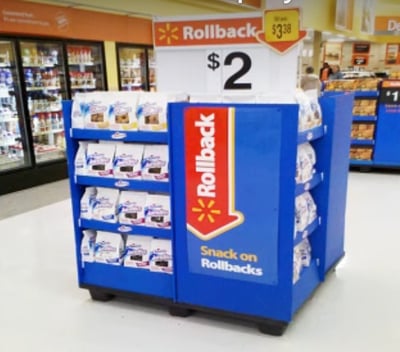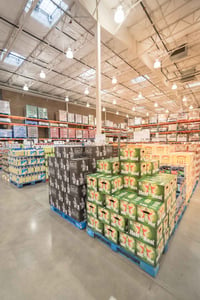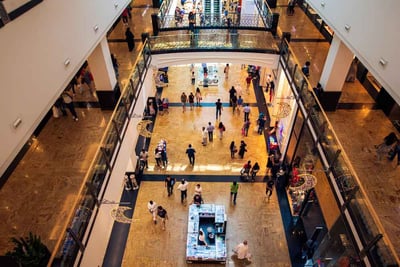The Top 5 Types Of Point Of Purchase Displays
So, you are looking for a way to make your retail products stand out from your competitors. And, you have recently discovered that one of the best ways to do this is to use a point of purchase display.
But, you are not sure which type of point of purchase display is right for your products. You are not even sure if you know about all the different kinds of point-of-purchase displays currently available.
You want a better understanding of the different types of POP displays currently available, and you are hoping to find the right one for your product marketing needs.
Well, you have come to the right place! With over 65 years in the packaging industry, Industrial Packaging has helped countless businesses find the proper POP display for their retail display requirements.
After reading this article, you will have all the information required to choose the best POP display for your in-store product marketing.
What Are The Different Types Of Point Of Purchase Displays?
When trying to find the correct POP display for your products, it is essential to note that there are three main types of POP displays currently available. However, thanks to recent technological advances, there are now five types of POP displays available for purchase.
Below, we will take a look at the top 5 types of point of purchase displays.
1. Temporary Point Of Purchase Displays
Temporary point of purchase displays are perhaps the most common type of POP display. Most of the time, these types of retail displays are made from corrugated cardboard.
They come in various sizes, from smaller single-sided countertop displays to full-sized aisle displays that stand about waist high and display products on two or more sides of the display.

Temporary POP displays are popular for various retail establishments, including supermarkets, gas stations, country stores, pharmacies, food marts, and other types of retail institutions.
These displays are used for marketing various types of products such as produce, bottled beverages, DVDs, CDs, video games, books, magazines, clearance items, and many other consumer goods.
In some cases, the display may even be made from the products themselves rather than a corrugated construct. For example, you have probably seen a POP display for soda or beer made from six or twelve packs of the beverages themselves.

By stacking these items in interesting shapes, a POP display can be made using the products themselves rather than requiring an additional physical structure.
2. Semi-Permanent Point Of Purchase Displays
Coming in at number two, we have semi-permanent POP displays. This type of POP display is similar to a temporary POP display. However, semi-permanent POP displays are often made out of sturdier materials.
These materials may include glass, heavy-duty cardboard, metal, wood, and hard plastics. Like temporary POP displays, they can range in size from small countertop displays to full-sized aisle displays.
While semi-permanent displays may be used for similar applications as temporary displays, generally speaking, they are used for more expensive or luxury products. These more robust rigid materials are often used to market products that exude a higher level of quality.
This may include products like such as makeup, shampoo, liquor, gourmet and specialty foods, books, electronics, and other high-end consumer goods.
How much will outsourcing your packaging cost?
3. Permanent Point Of Purchase Displays
Next up, we have permanent point of purchase displays. Although the name would suggest otherwise, this kind of POP display does not last forever. That being said, they can last up to 3 or more years when taken care of.
Permanent POP displays are usually made from highly durable forms of metal, glass, wood, and hard plastics. Some larger POP displays for trade shows even use carbon fiber.
This display will usually be on the larger end of the spectrum, sometimes even designed as a smaller storefront within a store. For example, when you go to a shopping mall, frequently, you will notice smaller vendors inside mini-store fronts in the center aisle of the mall that are separate businesses from the larger storefronts.

These vendors often sell mobile phones, sunglasses, watches, toys, and other consumer goods. This would be an excellent example of a permanent POP display. However, there are smaller permanent POP displays similar to those mentioned in the other types above.
You can find permanent POP displays in other environments, including trade shows, specialty department stores, shopping centers, and larger retail institutions.
4. Digital Point Of Purchase Displays
At number four, we come to digital point of purchase displays. This POP display may have a physical body or container like the traditional POP displays mentioned above, but they generally feature an LCD screen or similar digital monitor.

Sometimes, the entire display is a large LCD screen that plays videos or slide shows of the product featured on the device.
Digital point of purchase displays are used for advertising a host of different products, including soda, beer, wine, and foods of various types.
You can find digital POP displays in supermarkets, department stores, specialty retailers, trade shows, and other shopping areas.
5. Robotic Point Of Purchase Displays
Finally, we come to the newest addition to the point of purchase display family. Robotic point of purchase displays have only been around since 2020. Currently, the only robotic POP display on the market is Tokinomo.
Tokinomo POP displays are small rectangular boxes with a robotic arm. The arm has a universal grip that can hold most types of consumer products. To use Tokinomo, you attach a product to the arm and place the box on the shelf with the same products.
When a customer walks by the box, a motion sensor sets off the robotic arm, and the product is moved into the customer's field of view.
The product protrudes from the shelf, and a light shines on the product while the arm makes the product "dance." Simultaneously, a recording of a voice describing the product and its features plays from a speaker in the back of the device. A unique diffuser light will make the products glow with luminescence for clear or transparent bottled products such as whiskey.
The device can be programmed wirelessly and features both WIFI and blue tooth connectivity. If you do not have close access to a wall outlet, the included battery will last 7-10 days before a recharge is required. According to Tokinomo, their device, on average, increases retail sales of displayed products by 200%. Tokinomo's POP display can be used for in-store promotions and brand activation.
How Much Does A Point Of Purchase Display Cost?
Now you know all about the top 5 types of POP displays that are currently available. After reading this article, you should have everything you need to know to choose the correct POP display for your business. But, how much does a POP display cost?
Would you like to know what the price of a POP display is? If you answered yes, you would want to read this sister article How Much Does A Point Of Purchase Display Cost? Rates & Factors. With the information in this article, you will calculate the cost for the type of POP display you wish to purchase.
About Nathan Dube
As the Digital Marketing Specialist at Industrial Packaging, I am honored to create content for such a phenomenal company and work with one of the greatest teams in the Packaging Industry. Whether creating a video, writing blog posts or generating other pieces of content and multimedia, I am always excited to help educate and inspire our prospects and clients to reach their highest potential in regards to their packaging processes and needs.




